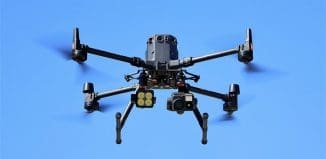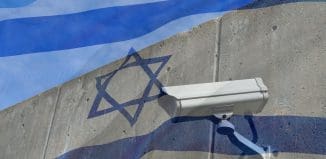Introduction to Border Security
This post is also available in:  עברית (Hebrew)
עברית (Hebrew)
By Boaz Zalmanowicz
Securing borders against illegal infiltration is one of the most important issues today’s security industry is dealing with. The U.S., for example, invests more in border protection than in all other law enforcement areas combined. This review explains some of the central concepts of border protection (the review doesn’t include smuggling through border checkpoints and securing aerial and naval borders).

A border isn’t just a marking or a narrow strip, it should be viewed as a separate zone. Its dimensions depend on topography, ground cover and other limitations, all affecting the way the border is secured. Elements affecting the operational concepts of border security include:
The relations between neighboring countries. For example: A border closed during war – there are no ways to legally cross the border, although the two sides prevent any illegal activities; A “cold peace” border – no war and limits on crossings with no real cooperation between the states; A true peacetime border – legal crossings and varying levels of security cooperation.
The topography of the border zone, including ground cover. Is it a natural border drawn according to natural features or is it an arbitrary line crossing mountains and lakes? Border environments may include deserts, mountains, vegetation, lakes and rivers, various weather conditions and more. Topography affects access and crossing paths – legal and illegal. The distance between the border and the destination of potential infiltrators is also an important consideration, as some areas offer more opportunities for stealth (communities, forests, caves) or quick getaways (busy highways). The area between a town and the nearest border might be nothing but empty desert, for example, with miles or just a few feet separating the two.
Infiltrators might go over the border, under it, around it and through it. A border area might lack a fence altogether, for example, while in other cases border fences stretch into the sea. Ladders or other basic measures might be used to bypass borders from above, not to mention using light aircraft or simply throwing contraband over the barrier. Infiltrations might be quiet and stealthy affairs – a method typically used by smugglers or terrorists; or they may be noisy and violent – a method used by terrorists, such as the Islamist radicals who hijacked an Egyptian army vehicle in the vicinity of the Kerem Shalom crossing and drove into Israel. Digging tunnels under border fences is also a popular method. Smuggling tunnels are typically found in border areas that are strongly patrolled by both sides, such as the U.S.-Mexico border area.
IHLS – Israel Homeland Security
The nature of the enemy also affects border protection procedures. Enemies may include criminals, such as weapon and drugs smugglers; commandos serving the neighboring country; criminal organizations; terrorist groups. The volume of infiltration, in addition to the levels of danger and violence, also affects security procedures.
The agencies in charge of border protection. Cooperation between various internal authorities, including government, parliament, police and other law enforcement agencies, affects the quality of border security. Sharing intelligence between agencies is a critical element of success, and so is correctly matching agencies and their methods to the various threats.
International law such as U.N. resolution 1373, calling on states to limit terrorist movement through efficient border monitoring, is the basis of border security – and also a limitation. Ethical consideration affect the policy of some countries as well.
Cooperation between countries, or regional cooperation, can have a very significant effect on border security. This requires matching government agencies and international laws. When one side fails to limit smuggling, for example, or even assists smuggling efforts, border security efficiency drops and procedures, concepts and equipment must be changed in order to adapt.
Technology. Technology both affects, and is affected by, operational border security concepts. Relevant considerations include cost vs. benefit, ease of use, experience of personnel and the ability to integrate new tech into existing frameworks.
The battle between border security and infiltrators is ongoing, with each side constantly trying to outdo the other – as exemplified by the evolution of Israeli border areas. Operational concepts, techniques and technologies are constantly trying to catch up to smugglers and border infiltrators.





























